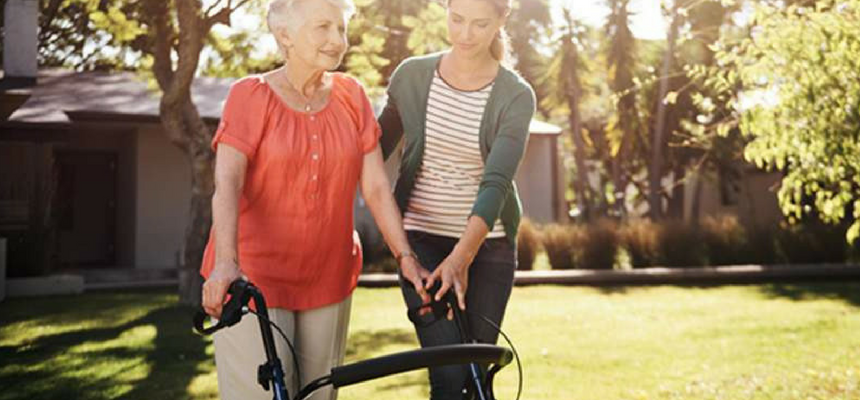Outdoor Safety with Mobility Devices – A Guest Post by Select Rehabilitation


Fun in the Sun: Safety Tips for Outdoor Mobility Using Assistive Devices
For many older adults, summer is a time for outdoor activities like swimming and picnics with family and friends. However, summer can also bring an increased risk of falls due to difficulty with ambulation outdoors. Mobility can be particularly challenging in an outdoor environment especially if an individual must navigate using an assistive device.
Ambulating outdoors with an assistive device can be intimidating and often tricky for individuals using them for the first time. Before using an assistive device outdoors you (or your therapist) must set up the device for your specific body and overall mobility needs. Regardless of which type of assistive device you use (walker, cane, etc.), you need to have the device fit you properly. Proper placement of the device is also quite important for optimal use and function. When using a walker, it is placed right in front of you but when using a cane it is held in the opposite hand of the affected side or leg.
Once the device is set up and adjusted appropriately, it is time to get moving outdoors. Proper ambulation and walking pattern will vary greatly depending on the assistive device being used and on the amount of weight that is placed on the affected limb. Regardless of the device you are using, you will start by advancing the device first, followed by the affected or surgical side, and lastly the non-affected/stronger side.
If you use an assistive device for outdoor mobility, remove any outdoor rugs or unnecessary objects to allow you to move freely using your walker/ cane/ wheelchair. Look out for extension cords and/or debris on the sidewalk or walkways of outdoor areas. If using a cane, use a rubber tip on the end of the cane to help prevent slipping and provide some shock absorption. When using a standard walker, remember to pick it up and move it about a step in front of you. Use caution on thick surfaces such as grass that you pick it up high enough and don’t get it caught. Try not to use a walker on stairs if at all possible. Have someone carry it for you. Make sure that outdoor handrails are secure and accessible. Find out how many stairs there are to go up and down. Using appropriate supervision, you should practice before you ascend or descend any outdoor stairs.
By seeking professional advice to analyze your unique situation, the rehabilitation team can offer assistance and guidance to minimize falls and increase outdoor safety. In addition, your rehabilitation team can offer assistance in creating a plan for outdoor safety and fall risk reduction that includes:
- Identifying changes that can facilitate ease of movement throughout an individual’s outdoor environment.
- Your rehab team can perform comprehensive home outdoor assessments and make recommendations on necessary modifications and equipment that may be needed.
- Your rehab team can make recommendations and provide training in the use of adaptive equipment.
- Your rehab team can look at what tasks the individual needs and wants to perform each day to ensure comfort, safety and enjoyment in their outdoor living environment.
The Rehabilitation Team assists each person in staying safe in their outdoor living environment. The Rehabilitation Team is there to support them through both their challenges and successes.
For additional information, please contact your Select Rehabilitation Physical, Occupational and Speech therapists.

